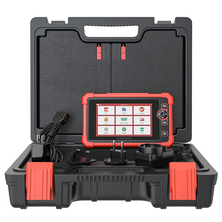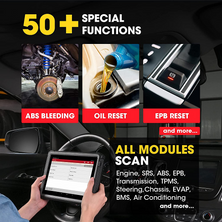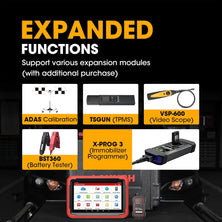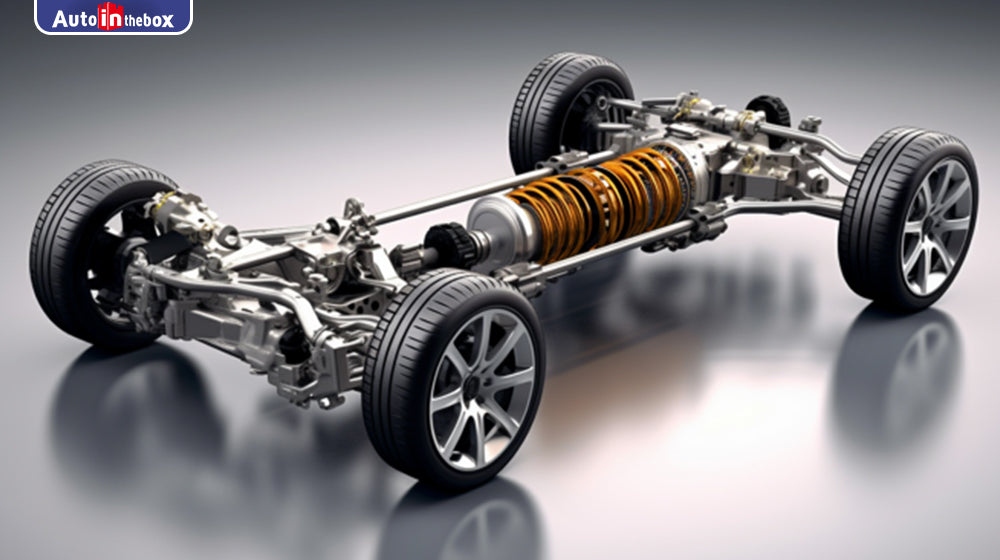
Car Chassis or suspension system is unstable?How to fix
When the car chassis or suspension system is unstable, it refers to a situation where the vehicle experiences issues with its stability and control. This instability can manifest as excessive body roll, bouncing, shaking, or drifting during turns. It negatively impacts handling, ride comfort, and overall vehicle safety. Identifying and addressing the underlying causes of this instability is crucial to ensure a smooth and controlled driving experience. Proper inspection, diagnosis, and necessary repairs or adjustments to components such as springs, shocks, control arms, and stabilizer bars are essential to fix the unstable car chassis or suspension system. Seeking professional expertise is recommended for a comprehensive assessment and appropriate resolution of the issue. Regular maintenance and adherence to manufacturer recommendations can also help prevent chassis or suspension system instability.
Recommended 2023 top car diagnostic tool: Autel MK908PRO II,Autel Elite II,Autel Ultra lite,Launch Pro5,Launch pros V
These signs highlight issues within the chassis or suspension system, which may require inspection, repair, or adjustment to restore stability, handling, and overall driving performance.
By employing these detection methods, you can assess the condition of the car's chassis and suspension system, identify any signs of instability, and determine the necessary steps to address the issues.
These components are integral to proper functioning of the car's chassis and suspension system. Their role in maintaining stability, controlling body movements, and ensuring optimal tire contact with the road surface cannot be overstated. Any issues with these components, such as wear, damage, or improper alignment, can negatively impact the vehicle's stability, handling, and overall safety. Regular inspection, maintenance, and timely replacement of these critical components are essential for a stable and well-performing car chassis and suspension system.
Inspection and maintenance: Conduct a comprehensive review of the chassis and suspension system components to identify worn-out, damaged, or misaligned parts. Regular maintenance, such as lubrication and tightening of bolts, can also help ensure proper functioning.
Adjustments and alignments:
Make necessary adjustments to components like springs.
Shock absorbers.
Control arms to achieve the recommended height, preload, and alignment settings.
This can involve adjusting the spring preload, tuning the shock absorbers' damping characteristics, or aligning the wheels for optimal balance.
Replacement of worn-out parts: If any components are worn-out or damaged during the inspection, replace them with new, high-quality pieces. This may include replacing worn-out springs, shock absorbers, control arms, bushings, or stabilizer bars to restore stability.
Balancing wheels and tires: Ensure proper balancing of wheels and alignment of tires to prevent vibrations and irregular tire wear. Wheel balancing involves redistributing weight around the wheel, while tire alignment ensures the wheels are perpendicular to the ground and parallel.
Seek professional assistance: If the instability issue persists or you are unsure about the necessary repairs, it is recommended to seek professional help from a qualified mechanic or suspension specialist. They can provide expert diagnoses and implement appropriate solutions based on their expertise and specialized equipment.
Remember, addressing an unstable car chassis or suspension system requires proper knowledge, skill, and attention to detail. Following manufacturer guidelines and seeking professional assistance when needed will help ensure your vehicle's stability, performance, and safety.
Overall, seeking professional help ensures that qualified experts evaluate and repair your car's chassis or suspension system, promoting safety, stability, and longevity. Their expertise, specialized equipment, and commitment to quality repairs make professional assistance crucial in effectively addressing and resolving chassis and suspension instability.
By implementing these preventive measures, you can minimize the risk of car chassis or suspension system instability, ensuring a safe and smooth driving experience while prolonging the lifespan of your vehicle's crucial components.
Recommended 2023 top car diagnostic tool: Autel MK908PRO II,Autel Elite II,Autel Ultra lite,Launch Pro5,Launch pros V
Here are some specific indications of an unstable car chassis or suspension system:
- Bouncing or vibrating: The vehicle experiences excessive bouncing or vibrating, especially when driving over uneven road surfaces or speed bumps.
- Body roll: The car leans excessively to one side during turns or lane changes, indicating a lack of proper stability and control.
- Unstable suspension: The suspension system fails to provide adequate damping, causing the vehicle to exhibit noticeable up-and-down movements when driving over bumps or potholes.
- Steering wheel vibration: The steering wheel may shake or vibrate noticeably while driving, indicating a lack of stability and compromised handling.
- Uneven tire wear: An unstable chassis or suspension system can result in uneven tire wear, particularly with more pronounced wear on the edges of the tires.
- Drifting or pulling: The car may drift or pull to one side, requiring constant correction by the driver to maintain a straight line, suggesting an imbalance or misalignment in the chassis or suspension components.
These signs highlight issues within the chassis or suspension system, which may require inspection, repair, or adjustment to restore stability, handling, and overall driving performance.
To detect if the car chassis or suspension system is unstable, the following methods can be employed:
- Visual inspection: Conduct a thorough examination of the chassis and suspension components, looking for signs of damage, wear, or misalignment. Check for any visibly broken or worn-out parts.
- Road test:Take the vehicle for a test drive on different road surfaces.Attention unusual noises, vibrations, or instability during acceleration, braking, and cornering.Observe if the car pulls to one side or experiences excessive body roll.
- Steering responsiveness: Assess the responsiveness of the steering wheel. Any delay or excessive play in the steering response could indicate issues with the suspension system.
- Suspension bounce test: Push down firmly on each corner of the vehicle and release. Observe the vehicle's response and how quickly it returns to its normal position. Excessive bouncing or prolonged oscillation may suggest problems with the suspension components.
- Tire inspection: Check the tires for uneven wear patterns. Excessive wear on one side of the tire or irregular patterns could indicate alignment or suspension issues.
- Professional inspection: If you're uncertain or suspect underlying problems, it's advisable to seek the expertise of a qualified mechanic or suspension specialist. They can utilize specialized tools, such as suspension analyzers, to conduct a comprehensive inspection and diagnose any potential instability.
By employing these detection methods, you can assess the condition of the car's chassis and suspension system, identify any signs of instability, and determine the necessary steps to address the issues.
When inspecting the car chassis or suspension system, it is essential to pay attention to the following key components, as they play a crucial role in the stability of the vehicle:
- Springs: Springs are responsible for supporting the vehicle's weight and absorbing shocks from the road. They help maintain the proper ride height and ensure the tires maintain contact with the road surface, contributing to stability and handling.
- Shock absorbers: Shock absorbers, also known as dampers, work in conjunction with springs to control the movement of the suspension. They dampen vibrations and prevent excessive bouncing or oscillation, enhancing stability and providing a smoother ride.
- Control arms: Control arms connect the suspension system to the chassis and play a vital role in maintaining proper wheel alignment and controlling the movement of the wheels. They contribute to stability by ensuring that the wheels remain in their intended positions during cornering or rough road conditions.
- Stabilizer bars: Stabilizer bars, also known as sway bars or anti-roll bars, help reduce body roll during cornering. They connect the suspension components on opposite vehicle sides, resisting excessive weight transfer and promoting balanced handling.
- Bushings and bearings: Bushings and approaches are used throughout the suspension system to reduce friction and allow for smooth movement of various components. Worn-out or damaged bushings and bearings can lead to instability, as they may result in excessive play or misalignment.
These components are integral to proper functioning of the car's chassis and suspension system. Their role in maintaining stability, controlling body movements, and ensuring optimal tire contact with the road surface cannot be overstated. Any issues with these components, such as wear, damage, or improper alignment, can negatively impact the vehicle's stability, handling, and overall safety. Regular inspection, maintenance, and timely replacement of these critical components are essential for a stable and well-performing car chassis and suspension system.
When dealing with an unstable car chassis or suspension system, the following methods can help address the issue:
Inspection and maintenance: Conduct a comprehensive review of the chassis and suspension system components to identify worn-out, damaged, or misaligned parts. Regular maintenance, such as lubrication and tightening of bolts, can also help ensure proper functioning.
Adjustments and alignments:
Make necessary adjustments to components like springs.
Shock absorbers.
Control arms to achieve the recommended height, preload, and alignment settings.
This can involve adjusting the spring preload, tuning the shock absorbers' damping characteristics, or aligning the wheels for optimal balance.
Replacement of worn-out parts: If any components are worn-out or damaged during the inspection, replace them with new, high-quality pieces. This may include replacing worn-out springs, shock absorbers, control arms, bushings, or stabilizer bars to restore stability.
Balancing wheels and tires: Ensure proper balancing of wheels and alignment of tires to prevent vibrations and irregular tire wear. Wheel balancing involves redistributing weight around the wheel, while tire alignment ensures the wheels are perpendicular to the ground and parallel.
Seek professional assistance: If the instability issue persists or you are unsure about the necessary repairs, it is recommended to seek professional help from a qualified mechanic or suspension specialist. They can provide expert diagnoses and implement appropriate solutions based on their expertise and specialized equipment.
Remember, addressing an unstable car chassis or suspension system requires proper knowledge, skill, and attention to detail. Following manufacturer guidelines and seeking professional assistance when needed will help ensure your vehicle's stability, performance, and safety.
The importance of seeking professional assistance when the car chassis or suspension system is unstable cannot be overstated. Here are the key reasons:
- Expertise and experience: Professional mechanics and suspension specialists have in-depth knowledge and extensive experience in diagnosing and repairing chassis and suspension issues. They are trained to identify the root cause of instability and provide accurate solutions.
- Specialized equipment: Professionals can access specialized diagnostic tools and equipment specifically designed for chassis and suspension systems. These tools enable them to perform thorough inspections, measurements, and adjustments, ensuring precise and effective repairs.
- Comprehensive assessment: Professionals can comprehensively evaluate the entire chassis and suspension system. They have the expertise to assess multiple components and their interactions, identifying any underlying problems that may contribute to the instability. This ensures that all relevant issues are addressed, promoting long-term stability and performance.
- Safety considerations: An unstable chassis or suspension system can compromise the vehicle's and its occupants' safety. Professionals understand the importance of ensuring a safe and reliable driving experience. They can prioritize safety concerns and take appropriate measures to restore stability, minimizing the risk of accidents or further damage.
- Warranty and guarantees: Reputable automotive repair shops often provide warranties or guarantees on their work. By seeking professional help, you can benefit from these assurances, knowing that the repairs and adjustments performed on your chassis or suspension system are backed by a guarantee.
- Preventive maintenance advice: Professionals address the immediate instability issue and provide valuable advice on preventative maintenance. They can recommend maintenance schedules, proper driving techniques, and other measures to help prevent future instability problems, prolonging the lifespan of your chassis and suspension system.
Overall, seeking professional help ensures that qualified experts evaluate and repair your car's chassis or suspension system, promoting safety, stability, and longevity. Their expertise, specialized equipment, and commitment to quality repairs make professional assistance crucial in effectively addressing and resolving chassis and suspension instability.
To prevent car chassis or suspension system instability, consider implementing the following preventive measures:
- Regular maintenance: Follow the manufacturer's recommended maintenance schedule for your vehicle. Regularly inspect and service the chassis and suspension components, ensuring they are in good condition and properly lubricated.
- Avoid overloading: Do not exceed the maximum weight capacity recommended for your vehicle. Overloading can strain the chassis and suspension system excessively, leading to instability and premature wear.
- Drive cautiously: Practice safe driving habits, such as avoiding sudden and harsh maneuvers, especially on uneven or rough road surfaces. Aggressive driving can subject the chassis and suspension to unnecessary stress and increase the risk of instability.
- Proper tire care: Maintain adequate tire pressure and regularly check for tire wear. Improperly inflated or worn-out tires can affect the stability and handling of the vehicle. Rotate and replace tires as necessary to ensure even wear.
- Avoid potholes and rough roads: Whenever possible, avoid driving over potholes, speed bumps, and other harsh road conditions. These can cause excessive stress and damage to the chassis and suspension components, leading to instability.
- Timely repairs: Address any signs of instability or abnormal behavior promptly. If you notice any unusual noises, vibrations, or handling issues, have your vehicle inspected by a professional to identify and resolve potential problems before they worsen.
- Seek professional advice: Consult a qualified mechanic or suspension specialist for guidance on preventive measures for your vehicle. Based on their expertise, they can provide recommendations on maintaining the chassis and suspension system's stability and performance.
By implementing these preventive measures, you can minimize the risk of car chassis or suspension system instability, ensuring a safe and smooth driving experience while prolonging the lifespan of your vehicle's crucial components.
Older Post
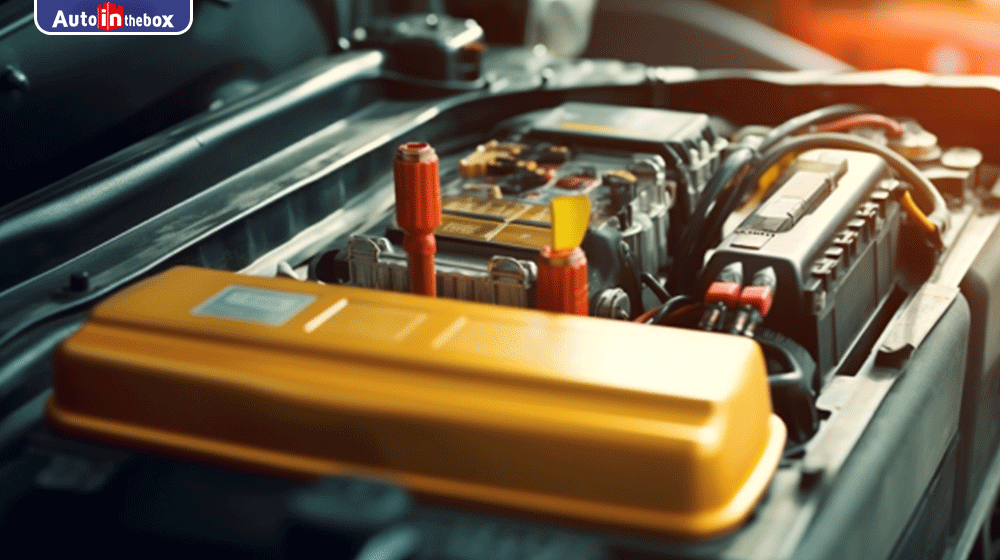 Newer Post
Newer Post
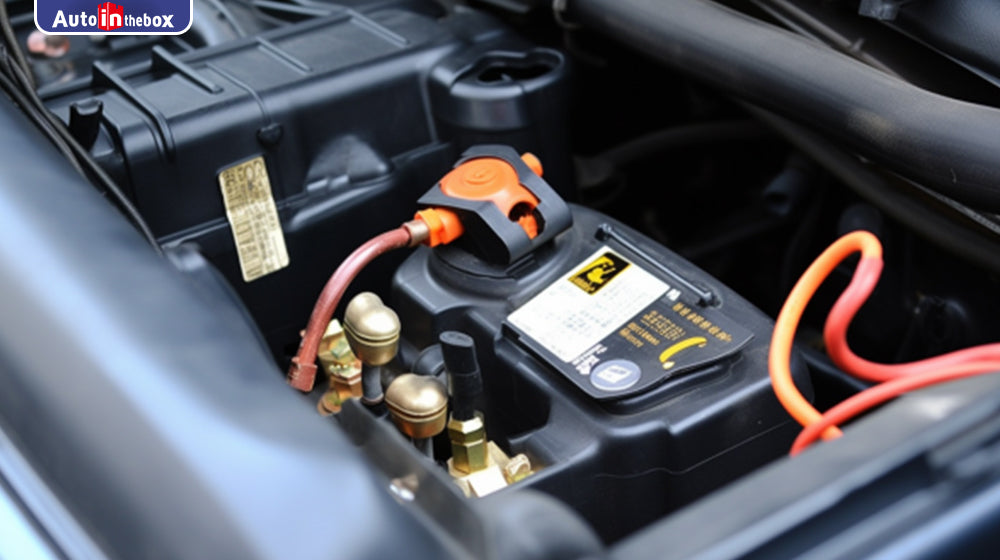
How to Repair Car Battery Won't Charge?

How do I Know if my car battery is shorted?




